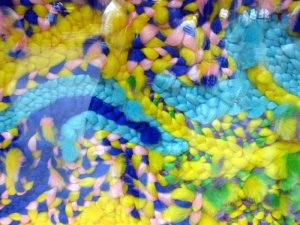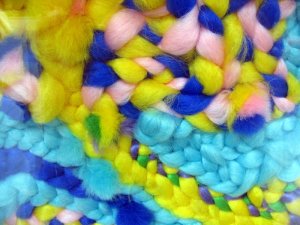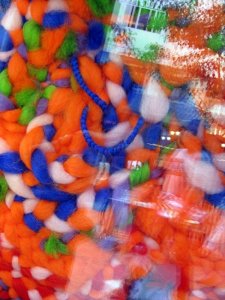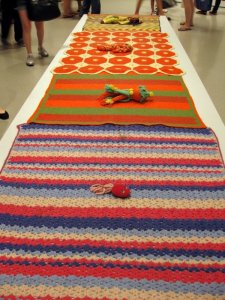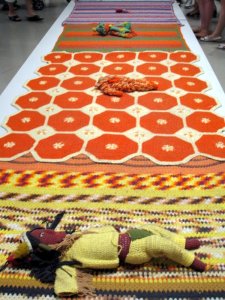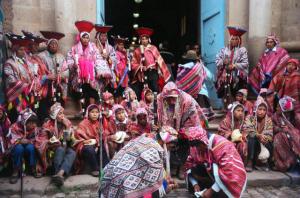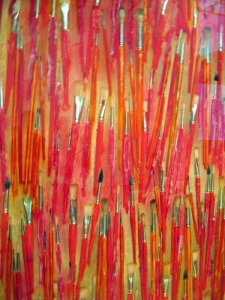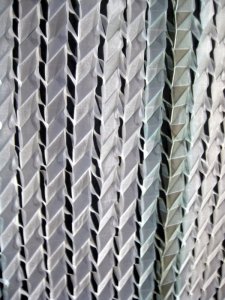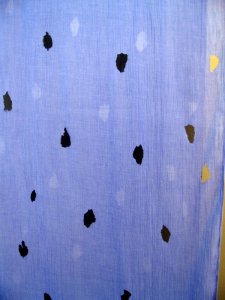Outside in the window display at MOMA was a large colourful knit/woven exhibit which covered the entire window. It is kind of random, unexpected, but as you look closer you can see a masterpiece of knots and weaves in various size and texture. The colours are so vibrant and contrasting, yet they all work well together.
The knit and woven theme continued inside with an adorable and colourful display of hand-knitted dolls placed on top of woven patterned mats of the same colour palette.
The colours, patterns, and the dolls remind me of traditional South American costumes and designs, such as those from Peru. To provide some examples, I found a pic of a piece of textile art out of feathers from Ancient Peru below:
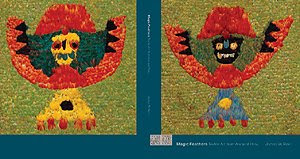
And a photo showing traditional Peruvian costume worn by the villagers.
I also came across a blanket/quilt (of some ethnic influence) which had paint or ink splatterings at one end. The colours and quilt detailing reminds me of traditional costume and face paint worn by the American Indians.
A closer look…
There were more paint-splattered artworks on display, I particularly liked the intensity of brush strokes and texture of the painting below – the thick layers of mainly white (with hints of blue and red) contrasts well against the yellow and black canvas peeking underneath. Quite urban looking. I’m already picturing colour palettes for streetwear ahead…
This is a cool exhibit. Pretty simple idea yet the outcome is very effective. The use of bright pink and metallic orange against a gold/yellow back-drop is genius.
Now I always get pretty excited when I come across new and interesting types of textiles and fabric, and finding 4 textiles on display produced by Japanese textiles company, NUNO Corporations, is by far no exception! The 4 textiles they had on display are examples of recent design interests in biomimicry (the imitiation of natural processes and forms).
The first one is: Kinugasa Mushroom (2007) textile, which mimics the lacey veil of the Kinugasa mushroom i.e. the mushroom grows a white perforated veil from the edge of its cap to attract pollinators.
The second one is called Tanabata, a type of polyester which is heat-treated, folded and cut to create an accordian-like structure. Truely beautiful.
The third textile is called Stalagmite. I had to steal this pic from NUNO’s website (http://www.nuno.com/) as the actual photo I took turned out horrible and blurry. As you can see from the pic below it’s a pretty fragile piece of fabric. It is made with a special steering wheel embroidery machine that creates a repeating design motif based on calcified rock formations.
Finally is one of my favourite types of fabrics…the environmetally-friendly types. This fourth textile is called Green Fabric, which is made from completely biodegradable cornstarch fibre. The fibre is overspun to create a delicate crepe material with irregular, ragged, perforations, revealing the beauty of imperfections. Note: Pic doesn’t do the fabric much justice – sorry!

